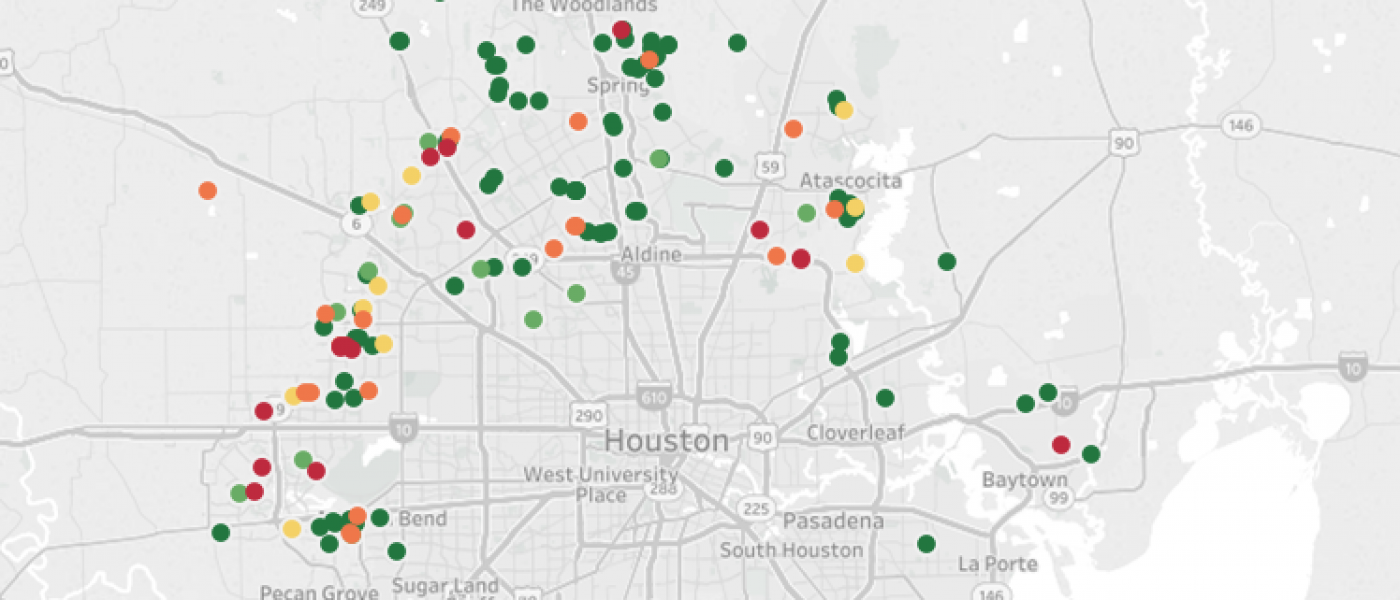Climate Risk, Real Estate, and the Bottom Line

GeoPhy and Four Twenty Seven – a leading provider of market intelligence on the impacts of climate change for financial market – today announce the release of a data product that provides granular projections of the impacts of climate change on real estate investment trusts (REITs). REITs represent an increasingly important asset class that provides investors with a vehicle for gaining exposure to portfolios of real estate. The data was launched at the Urban Land Institute Fall Event in Boston, MA, accompanied by a white paper that lays out the implications of climate risk for the real estate sector.
Four Twenty Seven applied its scoring model of asset-level climate risk exposure to GeoPhy’s database of listed real estate investment trusts’ (REITs) holdings, to create the first global, scientific assessment of REITs’ exposure to climate risk. The dataset includes detailed, contextualized projections of climate impacts from floods due to extreme precipitation and sea level rise, exposure to hurricane-force winds, water stress and heat stress for over 73,500 properties owned by 321 listed REITs.
“Real estate is on the frontline of exposure to climate change” said Emilie Mazzacurati, founder and CEO of Four Twenty Seven. “Many valuable locations and markets are often coastal or near bodies of water, and therefore are going to experience increases in flood occurrences due to increases in extreme rainfall and to sea level rise.” she noted. “These risks can now be assessed with great precision — the availability of this data provides investors with an opportunity to perform comprehensive due diligence which reflects all dimensions of emerging risks.” she concluded.
“The market has begun to price in the potential impacts of fat-tail climate events” noted Dr. Nils Kok, Chief Economist of GeoPhy. “Properties exposed to sea level rise in some parts of the United States are selling at a 7% discount to those with less exposure, and the value of commercial real estate is expected to equally reflect these risks. Leveraging forward-looking data on risk exposure can allow REIT investors to anticipate changes in market valuations and react accordingly.”
Read the report: Climate Risk, Real Estate, and the Bottom Line.
Key findings include:
• 35 percent of REITs properties globally are currently exposed to climate hazards. Of these, 17 percent of properties are exposed to inland flood risk, 6 percent to sea level rise and coastal floods, and 12 percent to hurricanes or typhoons.
• U.S. markets most exposed to sea level rise include New York, San Francisco, Miami, Fort Lauderdale, and Boston. The REITs most exposed to sea level rise in the U.S. are Vornado Realty Trust and Equity Residential.
• Globally, REITs concentrated in Hong Kong and Singapore display the highest exposure to rising seas. Sun Hung Kai Properties, worth $56 billion, has over a quarter of its properties exposed to coastal flooding.
• 37 Japanese REITs have their entire portfolio exposed to the highest risk for typhoon globally, representing $264.5 billion at risk in properties in Tokyo and other Japanese cities.
Read the report: Climate Risk, Real Estate, and the Bottom Line.
Download the Press Release.


